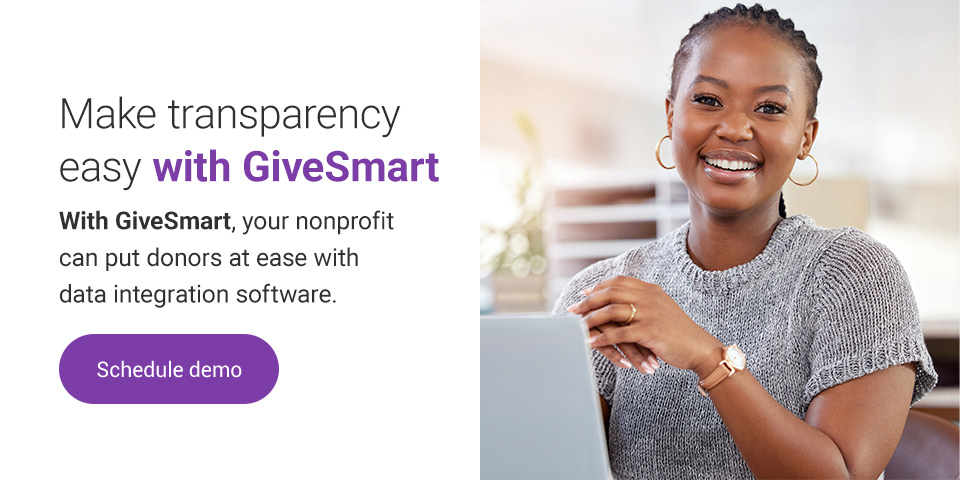Oct 6, 2022
Combatting Donor Skepticism

In nonprofit funding, every donation matters. Unfortunately, donor skepticism can be a significant hurdle for your organization to overcome. Knowing why potential donors feel skeptical toward nonprofits can help you create more successful communication strategies and increase your donations.
To eliminate donor skepticism, you need to understand donor psychology and develop approaches for removing the barriers to giving. Keep reading to learn about how donor skepticism forms and how your organization can combat it.
Why are people skeptical about donating?
The consideration stage — or the thought process that brings a new donor to your organization — is essential for the donor journey. During consideration, donors gather information about whether to support your nonprofit. The information you provide about your organization helps them connect emotionally with your mission and decide if they want to be a part of it.
Unfounded skepticism of nonprofits might prevent some people from contributing to your organization. Some potential donors have a false perception that nonprofits are dishonest about their finances and work. This assumption comes from the negative publicity several nonprofits received because of perceived mishandling of donations, allegations of excessive compensation, or other unethical conduct. Negative perceptions of nonprofits also come from the assumption that people are inherently self-interested and corrupt.
However, the details may not be all they seem. Often, organizations that seem to have been dishonest or failed their donors haven’t done so — they were simply not transparent enough to dispel rumors. For example, several factors contribute to a nonprofit CEO’s salary, making it difficult to determine whether the organization overpays them. In addition, examining the money spent on just one of a nonprofit’s programs could leave out their other community efforts.
You can combat nonprofit donor skepticism by being overly transparent and ensuring authentic communication. Disclosing exactly how much your nonprofit receives in donations and spends on different efforts can help justify certain decisions like CEO’s salary, the amount spent on charitable programs, and more.
How to combat donor skepticism
The fear that a dishonest worker will swindle a potential donor out of their money can be a strong deterrent to a donor giving. Fortunately, you can combat donor skepticism with a few proven communication strategies that help prove your trustworthiness and increase donor confidence:
Provide a thorough history of your organization
Potential donors will research your organization to see whether they connect with its mission and if it lives up to their expectations. If you provide people with little information about your organization’s work, they will look elsewhere — and those sources may not have all the information.
It’s essential to provide thorough and accurate records about your nonprofit to help potential donors connect with your story. Keeping your organization’s history public dispels potential misunderstandings and can encourage donor trust. Talking about your organization’s history and mission also ensures potential donors can get the information they need to commit.
Email is an excellent medium to inform people about your organization. People who sign up for emails from your nonprofit are actively interested and looking to learn more. Take the opportunity to educate your email subscribers about your organization and excite them about your mission. Providing a thorough history of your nonprofit helps your story make an impact and removes some of the barriers to donating. Include information like the following:
- How and when you got started
- Your founders’ motivation for getting involved in this mission
- Your organization’s core values and the heart of your work
Publicize your staff
Nonprofit donor skepticism often focuses on your staff and their trustworthiness. Potential donors want to know their donations make a difference. Your organization’s staff plays an essential role in the impact you make. If donors cannot find information about your staff and volunteers, their confidence in your organization’s reliability could weaken. Being transparent about your team can combat this reaction and build trust.
Put information about the people who work for your nonprofit where donors can see it, like on your website or email campaigns. Donors should be able to find the names of your top staff along with their credentials and roles within your organization. It’s also helpful to tell donors who will handle their money so they can feel confident in the management of funds.
Show proof of your organization’s impact

Once donors know your organization’s history, mission, and staff, they will want to see its impact. Donors like to see the tangible results of contributions to your nonprofit, even if it’s someone else’s gift. Demonstrating your nonprofit’s influence is a great way to combat donor skepticism. It gives donors confidence that your organization will do the same work with their donation as it has with past contributions.
Showing that your nonprofit wants to maximize its influence builds confidence in your work. Consider implementing these strategies to prove how your organization is making an impact in your community:
- Show off completed projects: Display your nonprofit’s completed projects, whether through your website, social media channels, emails, or direct mail outreach. Provide photos, facts, and statistics that demonstrate the work you’ve done.
- Break down how you spend the donations you receive: Outline the process that connects contributions with different projects, including how long it takes to use a donation.
- Utilize attention-grabbing success stories to connect with donors: Describe how your organization makes a tangible difference and fills needs through accounts of success. Use easy-to-understand language and vivid details that clearly communicate your impact.
Let people know what you’re up to
Donors also want to see what your organization is doing today. Showing off projects in progress is just as crucial as providing proof of past accomplishments. It shows you’re currently working to better your community and actively accomplishing your mission.
Even if you don’t have results from your work yet, you build trust by displaying your efforts. Presenting current projects also demonstrates your competence and ability to execute your vision. Use social media engagement to promote your message and show photos of works in progress. Keep potential donors up to date on your current work through email and website updates.
Outline your budget
You can avert a lot of nonprofit donor skepticism by providing a clear budget. Many donors are skeptical because they don’t know precisely how nonprofits spend their donations. Your nonprofit can outline its budget to describe how you use every dollar and quantify each donation’s impact to put donors and potential donors at ease about how you spend their money.
Publicizing your budget through an annual report is a great way to be transparent with potential donors. Include infographics and reports in your budget to show how your organization uses the money it receives. Having access to your budget makes donors feel like they can trust you to do meaningful work.
Be authentic and honest
The donor decision-making journey relies on your organization’s honesty. Nonprofits usually aren’t automatically considered dishonest — the majority are trustworthy and work hard to make the world a better place. However, if a potential donor isn’t convinced, you may have to go out of your way to prove your reliability.
Being authentic and honest builds a solid foundation of trust with potential donors. Ensure all communication is transparent and open, from outlining your budget to dealing with inquiries and complaints. Donors will appreciate the truthfulness.
Make transparency easy with GiveSmart
Being honest and authentic can help your nonprofit gain more donors and make a bigger impact. Communicating transparently with potential donors should be simple. With GiveSmart, your nonprofit can put donors at ease with data integration software. Our software makes authentic communication easy through live, intuitive reporting. You can collect data about fundraising efforts, your website traffic, and more through the GiveSmart platform. Then share reports with prospective donors to combat skepticism and prove your organization’s impact.
Schedule a demo today to learn how GiveSmart helps nonprofits raise more money and retain donors.

Related



